1. Kim N, Hong S, Chun J, Hwang K. Laboratory-based surveillance of water-and food-borne infectious disease-causing bacteria in the Republic of Korea, 2016-2018. Public Health Wkly Rep. 2019; 12:898–903.
2. Yoo M, Chung SH, Park YS, Oh IH, Chae WY, Kim SH, et al. Clinical characteristics of
Campylobacter enterocolitis in Korean adults: a retrospective study at a single center. Korean J Gastroenterol. 2020; 75:188–197. PMID:
32326685.
3. Francois Watkins LK, Laughlin ME, Joseph LA, Chen JC, Nichols M, Basler C, et al. Ongoing outbreak of extensively drug-resistant
Campylobacter jejuni infections associated with US pet store puppies, 2016-2020. JAMA Netw Open. 2021; 4(9):e2125203. PMID:
34524434.
4. Qayed E, Srinivasan S, Shahnavaz N. Sleisenger and Fordtran’s Gastrointestinal and Liver Disease Review and Assessment. 11th ed. Philadelphia, PA, USA: Elsevier Health Sciences;2020.
5. Ahn SY, Park JY, Lim IS, Chae SA, Yun SW, Lee NM, et al. Changes in the occurrence of gastrointestinal infections after COVID-19 in Korea. J Korean Med Sci. 2021; 36(24):e180. PMID:
34155841.
6. Pines JM, Zocchi MS, Black BS, Carlson JN, Celedon P, Moghtaderi A, et al. Characterizing pediatric emergency department visits during the COVID-19 pandemic. Am J Emerg Med. 2021; 41:201–204. PMID:
33257144.
7. Westgard BC, Morgan MW, Vazquez-Benitez G, Erickson LO, Zwank MD. An analysis of changes in emergency department visits after a state declaration during the time of COVID-19. Ann Emerg Med. 2020; 76(5):595–601. PMID:
33008651.
8. Xiao J, Dai J, Hu J, Liu T, Gong D, Li X, et al. Co-benefits of nonpharmaceutical intervention against COVID-19 on infectious diseases in China: a large population-based observational study. Lancet Reg Health West Pac. 2021; 17:100282. PMID:
34611630.
9. Ullrich A, Schranz M, Rexroth U, Hamouda O, Schaade L, Diercke M, et al. Impact of the COVID-19 pandemic and associated non-pharmaceutical interventions on other notifiable infectious diseases in Germany: an analysis of national surveillance data during week 1-2016 - week 32-2020. Lancet Reg Health Eur. 2021; 6:100103. PMID:
34557831.
10. Kraay AN, Han P, Kambhampati AK, Wikswo ME, Mirza SA, Lopman BA. Impact of nonpharmaceutical interventions for severe acute respiratory syndrome coronavirus 2 on norovirus outbreaks: an analysis of outbreaks reported by 9 US states. J Infect Dis. 2021; 224(1):9–13. PMID:
33606027.
11. Nisavanh A, Horrigue I, Debin M, Turbelin C, Kengne-Kuetche C, Nassany O, et al. Epidemiology of acute gastroenteritis in France from November 2019-August 2021, in light of reported adherence to COVID-19 barrier measures. Sci Rep. 2022; 12(1):17504. PMID:
36261604.
12. Cho SR, Chae SJ, Jung S, Choi W, Han MG, Yoo CK, et al. Trends in acute viral gastroenteritis among children aged ≤5 years through the national surveillance system in South Korea, 2013-2019. J Med Virol. 2021; 93(8):4875–4882. PMID:
33219526.
13. Kim HS, Rotundo L, Nasereddin T, Ike A, Song D, Babar A, et al. Time trends and predictors of acute gastroenteritis in the United States. J Clin Gastroenterol. 2017; 51(8):693–700. PMID:
28787355.
14. Sher AA, Ashraf MA, Mustafa BE, Raza MM. Epidemiological trends of foodborne Campylobacter outbreaks in the United States of America, 1998-2016. Food Microbiol. 2021; 97:103751. PMID:
33653524.
15. Moffatt C. Examining the epidemiology of campylobacteriosis in Australia [dissertation]. Canberra, Australia: The Australian National University;2021.
16. Bolton DJ. Campylobacter virulence and survival factors. Food Microbiol. 2015; 48:99–108. PMID:
25790997.
17. Lévesque S, Fournier E, Carrier N, Frost E, Arbeit RD, Michaud S. Campylobacteriosis in urban versus rural areas: a case-case study integrated with molecular typing to validate risk factors and to attribute sources of infection. PLoS One. 2013; 8(12):e83731. PMID:
24386265.
19. Rha JY, Lee B, Nam Y, Yoon J. COVID-19 and changes in Korean consumers’ dietary attitudes and behaviors. Nutr Res Pract. 2021; 15(Suppl 1):S94–109. PMID:
34909136.
20. Altig D, Baker S, Barrero JM, Bloom N, Bunn P, Chen S, et al. Economic uncertainty before and during the COVID-19 pandemic. J Public Econ. 2020; 191:104274. PMID:
32921841.
21. Langeland S. COVID-19 lockdowns are central planning. Liberty Univ J Statesmanship Public Policy. 2021; 2(1):3.
22. Unnikrishnan A, Figliozzi MA. A Study of the Impact of COVID-19 on Home Delivery Purchases and Expenditures. Portland, OR, USA: Portland State University;2020.
23. Nelson W, Harris B. Campylobacteriosis rates show age-related static bimodal and seasonality trends. N Z Med J. 2011; 124(1337):33–39.
24. Chen J, Sun XT, Zeng Z, Yu YY. Campylobacter enteritis in adult patients with acute diarrhea from 2005 to 2009 in Beijing, China. Chin Med J (Engl). 2011; 124(10):1508–1512. PMID:
21740807.
25. Kim SG, Jung HK, Lee HL, Jang JY, Lee H, Kim CG, et al. Guidelines for the diagnosis and treatment of Helicobacter pylori infection in Korea, 2013 revised edition. J Gastroenterol Hepatol. 2014; 29(7):1371–1386. PMID:
24758240.
26. Prescott SL, Wegienka G, Logan AC, Katz DL. Dysbiotic drift and biopsychosocial medicine: how the microbiome links personal, public and planetary health. Biopsychosoc Med. 2018; 12(1):7. PMID:
29743938.
27. Green MS, Schwartz N, Peer V. Sex differences in campylobacteriosis incidence rates at different ages - a seven country, multi-year, meta-analysis. A potential mechanism for the infection. BMC Infect Dis. 2020; 20(1):625. PMID:
32842973.
28. Gameiro CM, Romão F, Castelo-Branco C. Menopause and aging: changes in the immune system--a review. Maturitas. 2010; 67(4):316–320. PMID:
20813470.
29. Sibbald CJ, Sharp JC. Campylobacter infection in urban and rural populations in Scotland. J Hyg (Lond). 1985; 95(1):87–93. PMID:
3839516.
30. Lal A, Ikeda T, French N, Baker MG, Hales S. Climate variability, weather and enteric disease incidence in New Zealand: time series analysis. PLoS One. 2013; 8(12):e83484. PMID:
24376707.
31. Oberheim J. Weather conditions and campylobacteriosis in Germany [dissertation]. Bonn, Germany: University of Bonn;2020.
32. Moynihan R, Sanders S, Michaleff ZA, Scott AM, Clark J, To EJ, et al. Impact of COVID-19 pandemic on utilisation of healthcare services: a systematic review. BMJ Open. 2021; 11(3):e045343.
33. Karikari AB, Obiri-Danso K, Frimpong EH, Krogfelt KA. Antibiotic resistance in Campylobacter isolated from patients with gastroenteritis in a teaching hospital in Ghana. Open J Med Microbiol. 2017; 7(1):1–11.
34. Allos BM. Association between
Campylobacter infection and Guillain-Barré syndrome. J Infect Dis. 1997; 176(Suppl 2):S125–S128. PMID:
9396695.
35. Zachariah OH, Lizzy MA, Rose K, Angela MM. Multiple drug resistance of
Campylobacter jejuni and
Shigella isolated from diarrhoeic children at Kapsabet County referral hospital, Kenya. BMC Infect Dis. 2021; 21(1):109. PMID:
33485326.
36. Cho H, Kwon JW. Prevalence of anaphylaxis and prescription rates of epinephrine auto-injectors in urban and rural areas of Korea. Korean J Intern Med. 2019; 34(3):643–650. PMID:
30360025.
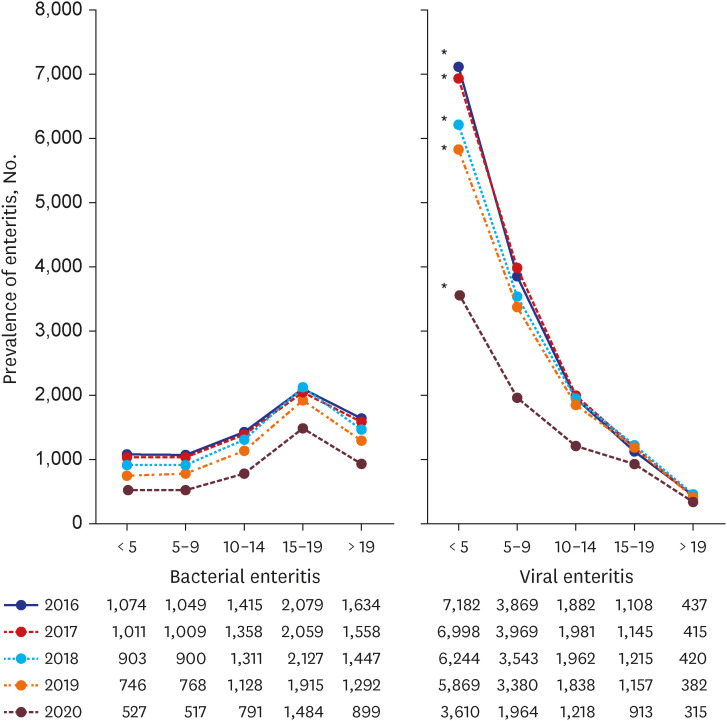






 PDF
PDF Citation
Citation Print
Print



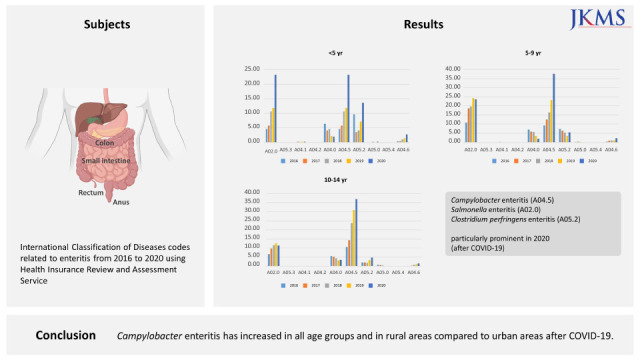
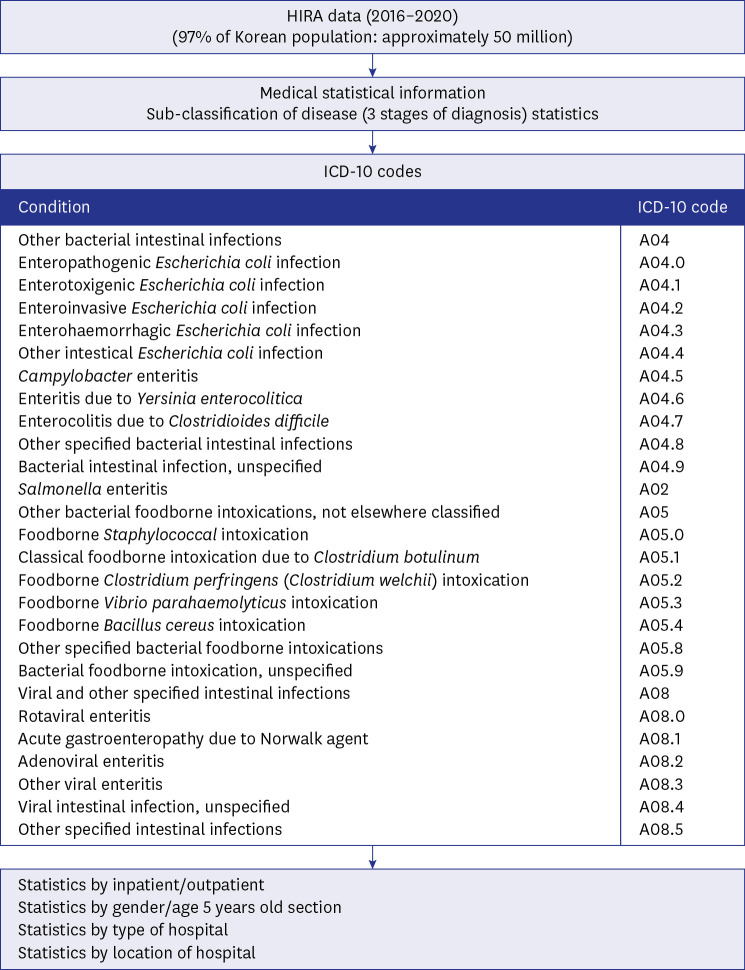
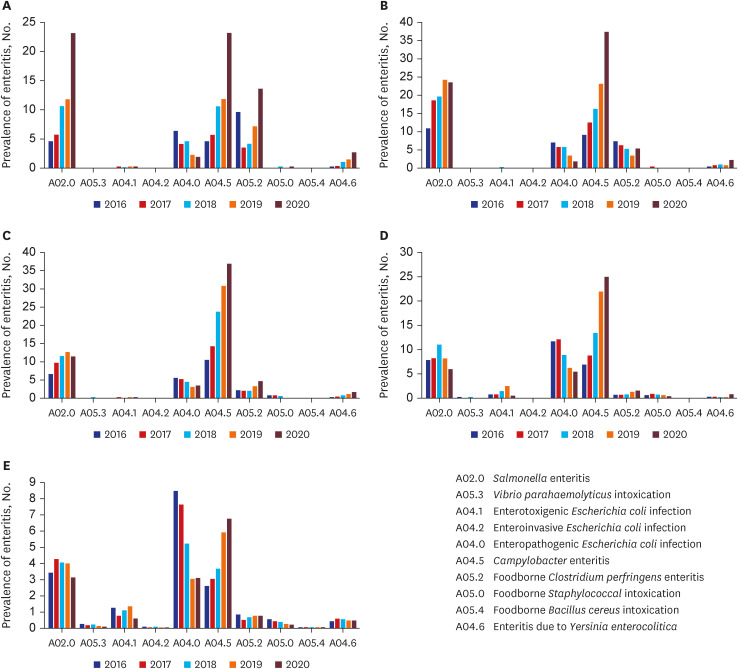
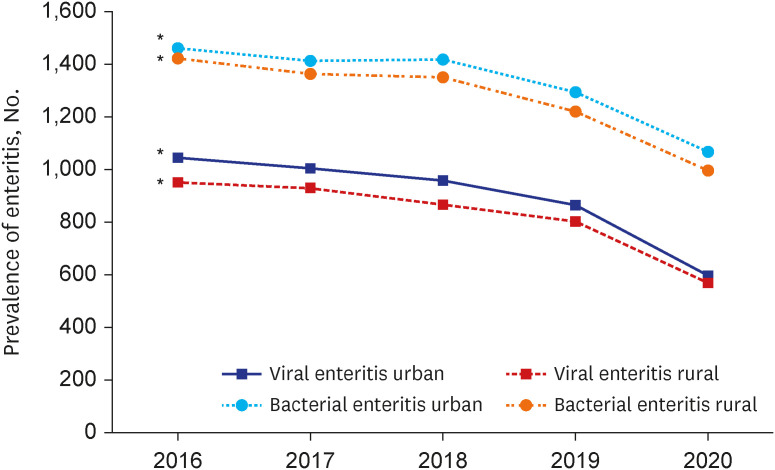
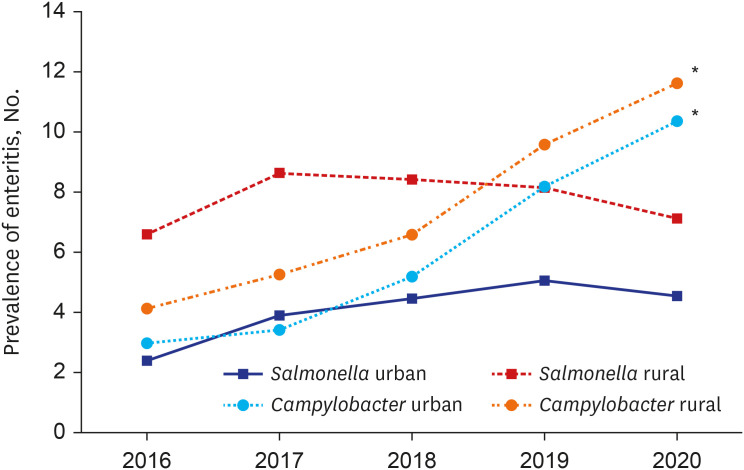
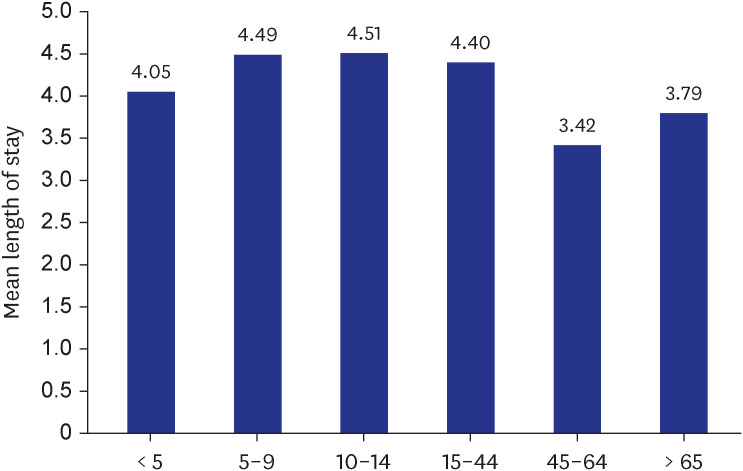
 XML Download
XML Download